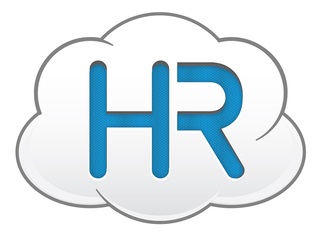Search posts by keywords:
Filter posts by author:
Related Reports
Related NEAT Reports
Other blog posts
posted on Jul 27, 2017 by Elizabeth Rennie

NelsonHall’s recently published (July, 2017) Targeting Cloud-Based HR Services market analysis report estimates the global cloud-based HR services market to be $15.2bn, and this is expected to continue its growth trajectory (~6.3% CAGR) to reach $20.6bn by 2021.
With the largest portion of the market coming from cloud implementations (~44%), it’s interesting to find that less than half of the current multi-process HR outsourcing contracts are being delivered on cloud-based systems. Despite the growing appetite for cloud-based HR platforms, vendors continue to encounter organizations hesitant to leave traditional on-premise systems and make the switch to the cloud.
Our research finds that the top inhibitors to moving to cloud-based HR systems and services include:
- Lack of business case or funding to replace existing HCM technology
- Desire to maximize previous legacy technology investments
- Perception that the change impact on the organization’s operations is too great or too risky.
A major challenge for vendors remains in helping prospective customers to overcome and successfully navigate the impact of change to operations from a cloud-based HR transformation initiative, particularly for larger, complex, highly-customized client environments. And the lack of a successful business case that shows ROI is often a roadblock that some deals do not overcome.
As a result, vendors are continuing to invest in, and actively market, branded tools and enablers that make the move to the cloud simpler, faster, and less cumbersome. By offering pre-configured, standardized wizards and tools that shrink the deployment time and make implementation of cloud systems much easier, value realization and ROI are being achieved much sooner than before.
Examples of HR BPaaS vendor offerings that expedite deployment include:
- Ceridian’s Dayforce Activate:
- Platform: Dayforce HCM
- Description: Guided implementation wizard/tool configures ~80% of implementation based on responses and data leveraging RPA. It prepares system for testing and go live
- Key benefit: Simplified implementation; reduces implementation effort up to 60%, cycle time up to 50%; quicker ROI realization.
- Neeyamo’s Rapid Deployment Solution:
- Platform: SAP/SuccessFactors
- Description: Leverages a standardized, pre-configured fixed-scope model for implementing SAP/SuccessFactors Employee Central
- Key benefit: Streamlines implementation of SAP/SuccessFactors; reduced time, effort and cost of implementation; quicker ROI realization.
- NGA HR’s cleaHRsky:
- Platform: SAP/SuccessFactors
- Description: HRaaS including analytics that tie in HR, Payroll, as well as HR service center interaction data; pre-configured/’plug-and-play’ ready, for rapid deployment in 145 countries; range of HRaaS service models for post-deployment support
- Key benefit: Live on SAP/SuccessFactors in ~100 days; reduces implementation cost ~30% on average.
Looking forward, in addition to improving the deployment of cloud-based HR systems and services, cloud-based HR service vendors will continue to make investments that drive value for clients in the following ways:
- With demand for post-deployment application management services (AMS) now a leading gateway to new clients for vendors, ~70% of vendors expect to add or expand their post-deployment (e.g. AMS) support services. Many now offer AMS services on more than one system, and most now offer AMS as a standalone
- Enhancing the user experience by offering intuitive, easy-to-use, consumer grade (mobile-enabled) applications that make day-to-day HR transactions simple
- Providing access to on-demand HR data through descriptive and predictive analytics that is easy to access and provides accurate real-time views of the workforce; vendors are investing heavily in HR analytics as a service, which will become a more common vendor offering in the future
- Developing and deploying advanced automation capabilities (e.g. RPA/bots and AI) throughout the delivery model to reduce operating costs, increase efficiency and accuracy, and improve the user experience.

Jul 31, 2017, by Luc Bossaert